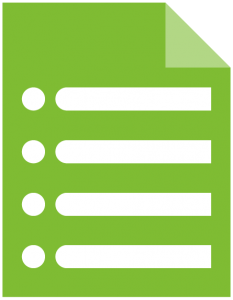URCAD Info Session for ARTS students
Deadline for registration for URCAD 2024 has been extended to March 1st.
Date: TBA
Are you an undergraduate arts student who wants to share your work with the UMBC community at URCAD?
- Filmmakers!
- Painters!
- Musicians!
- Poets!
- Digital Artists!
- Dancers!
- Actors!
- Costume Designers!
- Photographers!
Come hear about how to put together an application for Undergraduate Research and Creative Achievement Day (URCAD), and how to write an effective abstract that summarizes your work as an artist.
- Students presenting in PHB 337 (The Dance Cube) are working directly with a representative from the Dance department on technical requirements and rehearsal.

- Students presenting video or animation (location TBA) should via the student’s Youtube or Vimeo account. Links must be forwarded to Mike Mower (mmower1@umbc.edu) no later than Wednesday, April 15th. Contact Mr. Mower if you have any questions pertaining to your entry.
- Students with video which is not primarily artistic may want to attend a prep session for oral presenters.
- Students presenting (oral or poster) should addressed their needs with either April Householder (aprilh@umbc.edu) or Devon Fick (dfick1@umbc.edu).
During Undergraduate Research and Creative Achievement Day, students are asked to discuss their work in terms of both its creative process and its research context. Your goal is to explain your work and its significance in a way that the audience will understand. The ability to speak in a compelling way about your art is important to your career! Here is an outline for a typical arts presentation:
- Present some background information for your audience. Set the stage for them.
- How does this work fit into the field of (sculpture, music, dance, video, theatre etc.)?
- What theories, perspectives, trends, or practices does this work assume and build on?
- What was your goal in this creative effort?
- What should the audience be looking for as they view or hear your work? What will help them to understand the contribution this work makes to your field?
- Show,
- perform,
- or play your work.
- Reinforce the concepts used in the work, e.g., “Did you see the way shadow was used to create…”
- Talk about the process you went through, e.g., “I thought playing more quickly would create the tension I sought, but then I found…”
- Share lessons learned, e.g., “Next time I will….” or “Another artist seeking to build on this work might want to…”
- What was your process?
- What did you try that didn’t work?
- What did you do that did work?
- What surprises did you encounter while working on this?
- What is the foundation – theoretical and practical – of the work you did?
- What have you added to this foundation?
- What would others need to know to continue this line of inquiry, experimentation, creative work?
- Leave time for questions.
- Make your answers short, to the point, and informative.
- Be as prepared as possible. Anticipate likely questions.
- Repeat questions from questioners with faint voices.
- Your goal is to present your work in a way that is easily understood and shows your enthusiasm.
- Speak to your audience, look at them, show them that you know they are listening.
- Speak slowly and clearly, with interest and engagement.
- Be mindful that public presentation of research/creative achievement has its entertainment side.
- Show enthusiasm for your research/creative achievement in order to engage the audience; think of the speaking style of UMBC President Freeman Hrabowski.
- REHEARSE your presentation before friends, family, etc. as it familiarizes you with the detail of its content and will put you at ease.
- Every presentation has a rehearsal.
- Wear neat clothing to make a good first impression. Suits are not required.
- Try to stay relaxed.
- Vary the tone of your voice, speak slowly, and articulate. Try to speak to the person farthest away from you to be sure your voice is loud enough.
- Maintain eye contact: Use the three-second method, i.e., look straight into the eyes of a person in the audience for three seconds at a time. Have direct eye contact with a number of people in the audience, and every now and then glance at the whole audience while speaking.
- Do not slouch or lean on the podium, chew gum, fiddle with jewelry, wear a hat, or distract the audience in other ways.
- Keep your hands free for making gestures or hold them still. Do not put your hands in your pockets. Fill your pockets with pushpins if this is a problem.
- Practice speaking without filler words such as: “ok,” “like,” “um,” “sort of,” “ya know,” and “kind of.”
- Be familiar with the room where you will be presenting; it will make you more comfortable.
- Be sure to define any abbreviations or discipline-specific jargon.
- REHEARSE
- Do not exceed your time limit; the moderator is instructed to stop you if you run over.
- Be aware of the time and be prepared to cut to the conclusion to end within the time limit.
- Important for all artists: Don’t out-talk your art. Don’t explain away everything or turn the whole experience into words.
Questions? Email: aprilh@umbc.edu
2/14/2024